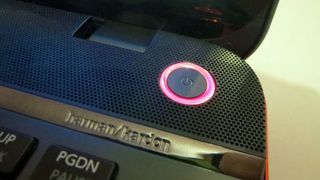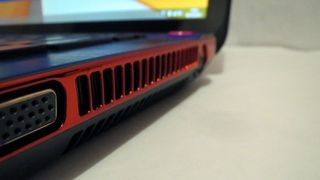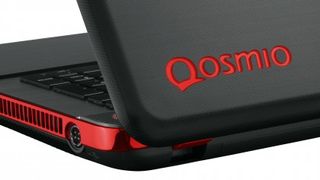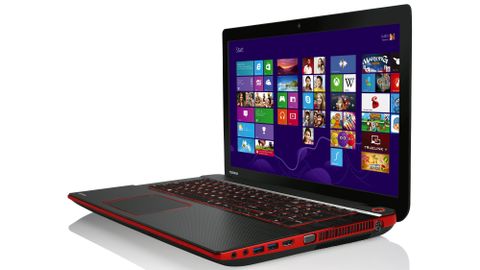Why you can trust TechRadar
3D Mark:
Ice Storm: 82,278, Cloud Gate: 14,661, Fire Strike: 3,307
Cinebench 11.5:
CPU performance: 5.71, OpenGL graphics performance: 15.49
PCMark 8 Home battery test:
1hr 58mins
Brightness:
343 nits
The Qosmio romped through 3DMark's tough Fire Strike benchmark to a score of 3,307. That's the best we've seen recently: the Gigabyte P25W scored 3,104, the Asus G750JX returned a result of 3,123, and the MSI GS70 Stealth brought up the rear with 2,211.
It's clear that the Qosmio can handle any modern game, as real-world gaming tests demonstrated. We ran Bioshock Infinite at 1,920x1080 and Ultra settings, and the Toshiba averaged a smooth 37fps.
The Core i7 processor wasn't able to top the table in benchmarks. In Cinebench 11.5's encoding test it scored 5.71: marginally behind the MSI's 5.99, and further down from the 6.94, 6.95 and 7 scored by the Schenker, Gigabyte and Asus notebooks.

Toshibas has spent the last two years producing lightning-quick SSDs, so it's no surprise that the drive inside the Qosmio impressed. In AS SSD's sequential read and write benchmarks the Qosmio's SSD scored 505MB/sec and 434MB/sec – both among the top speeds on offer from mSATA drives.
As with most gaming notebooks, though, don't expect the Qosmio X70 to last long away from a power source. In our standard battery test the Toshiba couldn't last longer than 1hr 32mins and, with the screen dimmed and Power Saver mode activated, it ran out of juice after just over two hours.
The non-touch 17.3-inch screen's Full HD resolution is great for making games look pin-sharp, and in benchmark tests it impressed. The measured brightness level of 343 nits is a superb headline figure, and it means the Toshiba's panel makes an eye-searing first impression – the MSI, its nearest rival, topped out at 318 nits.

The sRGB gamut coverage of 87.3% and average Delta E of 4.5 are both good, too: the former figure indicates that almost all colours will be accurately rendered by the Toshiba's panel, and the latter ensures reasonable accuracy.
The only black mark against this panel is the black level: at 0.57 nits it's a little high, and it means a mediocre contrast ratio of 606:1. Dark colours aren't as deep or as distinctive as we'd like: while we were able to distinguish between slight variations in lighter shades, different greys and blacks tended to blend together.

The four Harmon/Kardon speakers are hugely loud, but the audio output is dominated by tinny high-end sounds that go some way to masking the crunchy mid-range. There's bass in the range, too, but it's often barely audible – we'd prefer much more.
The Toshiba's keyboard has a rock-solid base, but its glossy keys don't look or feel as good as the MSI GS70 Stealth's unit. The keys are light, but there's not enough travel, which makes for an action that feels too subtle for fast-paced games. Conversely, the two buttons in the wide, smooth trackpad have too much travel – we were unable to click with as much speed as we'd like.
Mike has worked as a technology journalist for more than a decade and has written for most of the UK’s big technology titles alongside numerous global outlets. He loves PCs, laptops and any new hardware, and covers everything from the latest business trends to high-end gaming gear.

